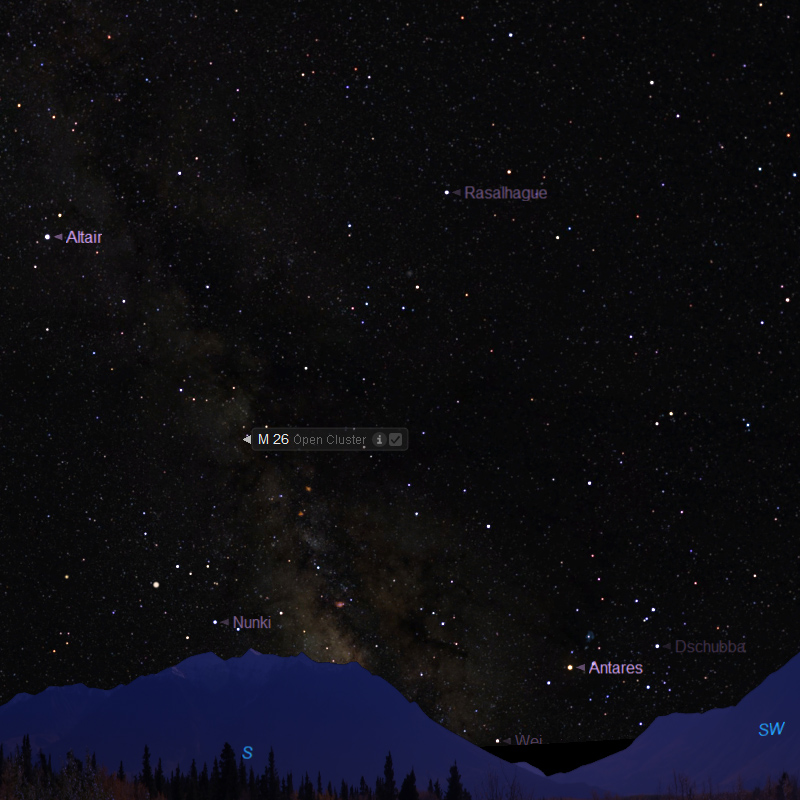M26

Credits: Keith Turnecliff, Long Itchington
Messier 26, also known as NGC 6694, is an open cluster of stars in the southern constellation of Scutum. It was discovered by Charles Messier on June 20, 1764. This 8th magnitude cluster is a challenge to find with typical binoculars, but can be spotted with an 80mm aperture. It is positioned near the open cluster Messier 11 and is 14′ across. About 25 stars are visible in a telescope with a 150–200 mm (6–8 in) aperture.
Facts about M26 by Keith Turnecliff
M26 is an open cluster located in the constellation Scutum. The cluster has an apparent magnitude of 8.0.
Messier 26 lies at an approximate distance of 5,000 light years from Earth.
The cluster occupies an area of 15 arc minutes, corresponding to a linear diameter of 22 light years.
The brightest star in M26 has a visual magnitude of 11.9 and the spectral classification B8. The estimated age of the cluster is 89 million years. M26 can be a challenge to find.

Best viewed with resolution 6248 x 4176.
Credits: Image courtesy of Starry Night Pro Plus 8, researched and implemented by Keith Turnecliff.